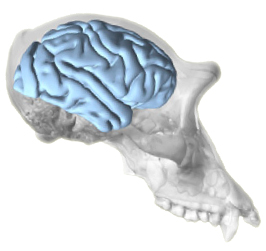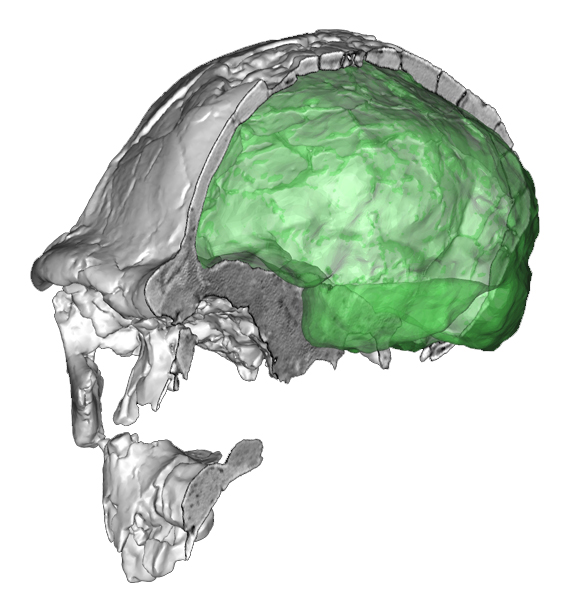 Brain evolution involves changes in size and morphology, but also changes in the capacity to be changed. Plasticity refers to the range of phenotypic variation allowed within a given genetic structure. Environment is a major factor influencing the phenotypic expression, and we humans have a special additional environmental component called “culture”. The ecological, cultural, and social niches, shape each others, with dynamics which are far from being understood. Aida Gómez-Robles and colleagues have now published a morphological analysis of human and chimp brain, taking into consideration heritability. In both species cranial capacity is highly heritable, more for humans than for chimps. Also the general dimensions of the main brain areas show in both species an apparent genetic component. The situation is different when dealing with sulcal morphology, which are still heritable for chimps but not that much for humans. This means that brain morphology in chimps has a stricter genetic program, while humans are more sensitive to non-genetic factors and individual responses. Environmental influences are supposed to be the key, mostly when considering the altricial condition and heterochronic changes associated with the human brain growth and development. In a recent review on the evolution of visuospatial integration with Atsushi Iriki we focused on the necessity to understand to what extent brain changes associated with human evolution are due to genetic, epigenetic or environmental factors. We pointed to the sensitivity of the brain to be “trained” through feedbacks between biology and culture as a crucial variable targeted by selection. This new study stresses further the possibility that selection can act on the capacity to change, more than on the change itself.
Brain evolution involves changes in size and morphology, but also changes in the capacity to be changed. Plasticity refers to the range of phenotypic variation allowed within a given genetic structure. Environment is a major factor influencing the phenotypic expression, and we humans have a special additional environmental component called “culture”. The ecological, cultural, and social niches, shape each others, with dynamics which are far from being understood. Aida Gómez-Robles and colleagues have now published a morphological analysis of human and chimp brain, taking into consideration heritability. In both species cranial capacity is highly heritable, more for humans than for chimps. Also the general dimensions of the main brain areas show in both species an apparent genetic component. The situation is different when dealing with sulcal morphology, which are still heritable for chimps but not that much for humans. This means that brain morphology in chimps has a stricter genetic program, while humans are more sensitive to non-genetic factors and individual responses. Environmental influences are supposed to be the key, mostly when considering the altricial condition and heterochronic changes associated with the human brain growth and development. In a recent review on the evolution of visuospatial integration with Atsushi Iriki we focused on the necessity to understand to what extent brain changes associated with human evolution are due to genetic, epigenetic or environmental factors. We pointed to the sensitivity of the brain to be “trained” through feedbacks between biology and culture as a crucial variable targeted by selection. This new study stresses further the possibility that selection can act on the capacity to change, more than on the change itself.

During the four million years since humans and chimpanzees shared a common ancestor, natural selection leading to Homo sapiens has favored our increased capacity to adapt to our environment.